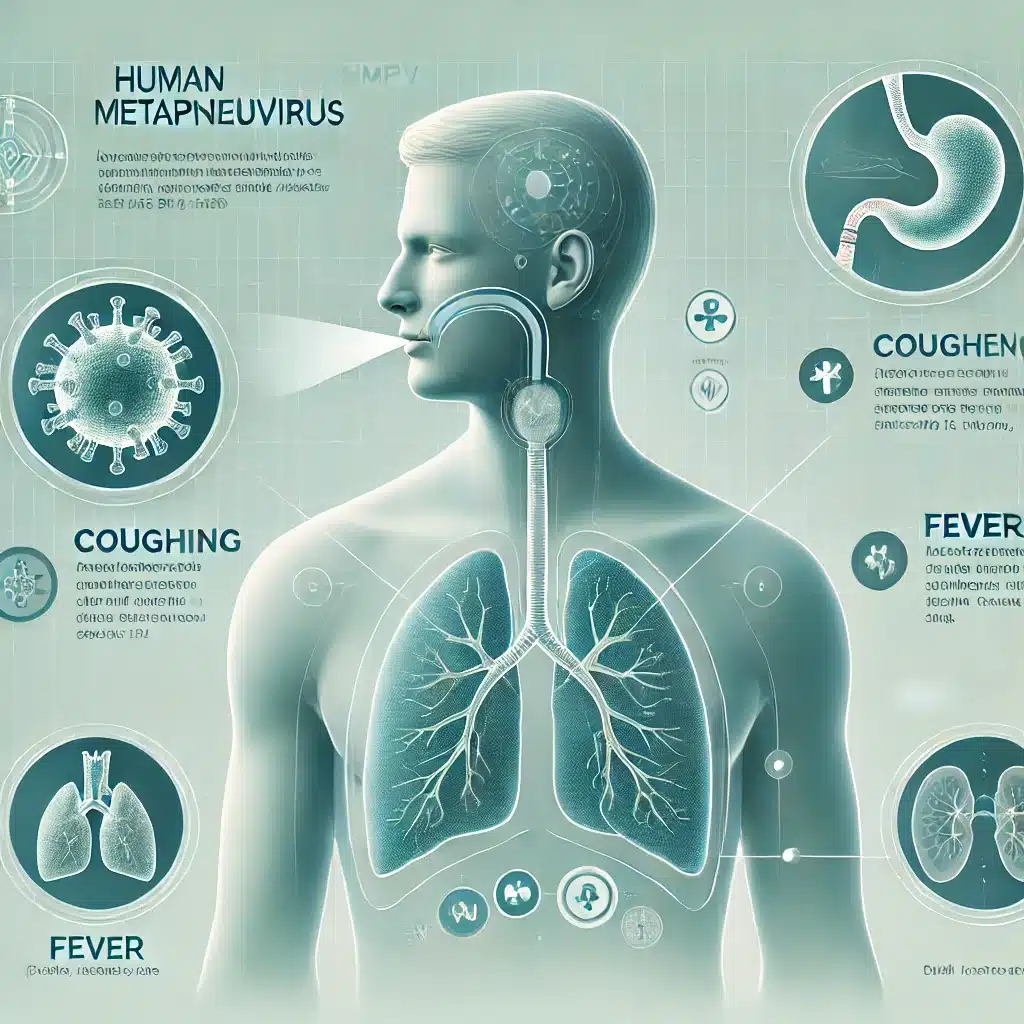
Human Metapneumovirus (HMPV) is a respiratory virus that has gained attention for its role in causing significant respiratory illnesses worldwide. While it shares similarities with other viruses like RSV (Respiratory Syncytial Virus) and influenza, HMPV is distinct and requires greater awareness. This blog explores what HMPV is, its symptoms, transmission methods, and how to protect yourself and your loved ones.
What is HMPV?
HMPV, or Human Metapneumovirus, was first identified in 2001. It belongs to the Paramyxoviridae family, which also includes other respiratory viruses. HMPV primarily affects the respiratory tract and is a common cause of illnesses like bronchiolitis and pneumonia.
Symptoms of HMPV
HMPV infections can range from mild to severe. Common symptoms include:
- Cough
- Nasal congestion
- Fever
- Sore throat
- Wheezing
- Shortness of breath
In severe cases, HMPV can lead to complications such as:
- Bronchiolitis: Inflammation of the small airways in the lungs.
- Pneumonia: Infection of the lungs.
These complications are more likely in:
- Young children (especially under 5 years old)
- Older adults (above 65 years)
- Individuals with chronic illnesses or weakened immune systems.
How Does HMPV Spread?
HMPV is highly contagious and spreads through:
- Respiratory droplets: When an infected person coughs or sneezes.
- Direct contact: Touching contaminated surfaces or objects and then touching your face.
- Close contact: Being near someone infected with the virus.
When is HMPV Most Active?
HMPV infections are more common in late winter and early spring, mirroring the seasonality of other respiratory viruses like RSV and the flu.
Diagnosis of HMPV
If HMPV is suspected, healthcare providers may use diagnostic tests, including:
- Molecular tests (PCR): Detects the virus’s genetic material.
- Antigen detection tests: Identifies viral proteins in nasal or throat swabs.
Treatment for HMPV
Currently, there is no specific antiviral treatment for HMPV. Management focuses on relieving symptoms and may include:
- Hydration: Drinking plenty of fluids.
- Fever and pain relief: Using over-the-counter medications like acetaminophen or ibuprofen.
- Oxygen therapy: For severe cases requiring hospitalization.
How to Prevent HMPV
Preventing the spread of HMPV involves simple but effective measures:
- Practice good hygiene: Wash your hands regularly with soap and water for at least 20 seconds.
- Avoid close contact: Stay away from individuals showing symptoms of respiratory illness.
- Disinfect surfaces: Regularly clean frequently touched surfaces like doorknobs, phones, and countertops.
- Wear masks: In crowded or high-risk settings, wearing a mask can reduce transmission.
The Future of HMPV Research
Although there is currently no vaccine for HMPV, research is ongoing to develop preventive measures and treatments. Increased awareness and funding for HMPV research could pave the way for effective vaccines in the near future.
Final Thoughts
HMPV is a serious respiratory virus that can affect anyone but poses the greatest risk to vulnerable populations. Understanding its symptoms, transmission, and prevention is crucial to reducing its impact. By taking preventive measures and staying informed, you can protect yourself and your loved ones from this virus.







